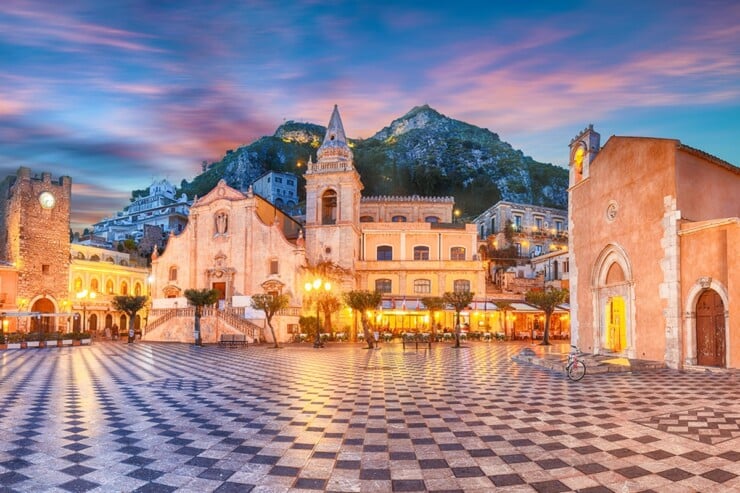Sicilian street food is simply incredible, full stop! Just get a taste of our favorite local street food specialties — arancini, panelle, and cannoli — to see what we mean.
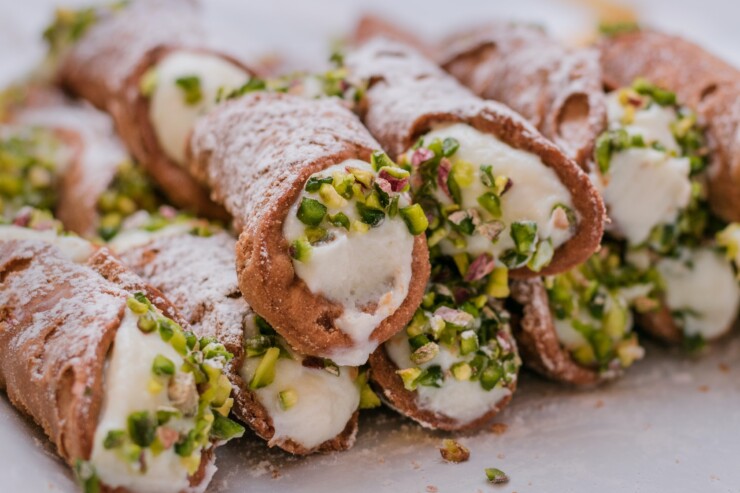
What Is So Special About Sicilian Food?
The combination of its history, culture, and climate makes Sicilian food a thing all its own. Sicilian cuisine shares many similarities with Italian fare. Sicilian dishes also have influences from Greek, Arab, Spanish, and French groups that settled on the island over the past two thousand years.
Sicily also has a relatively mild year-round climate, which makes agriculture a significant contributor. As you travel the island, you’ll see the olive farms, citrus groves, almond trees, and vineyards where much of the region’s fresh ingredients are grown.
14 Must-Try Sicilian Street Foods
Sicilian street food is an experience all its own. Sicilians love their street food and eat it often, so you’re experiencing a significant part of the culture when you partake in this dining experience yourself.
What should you be on the lookout for? We’ve compiled the top 14 Sicilian street food you can check off your bucket list, one delicacy at a time!
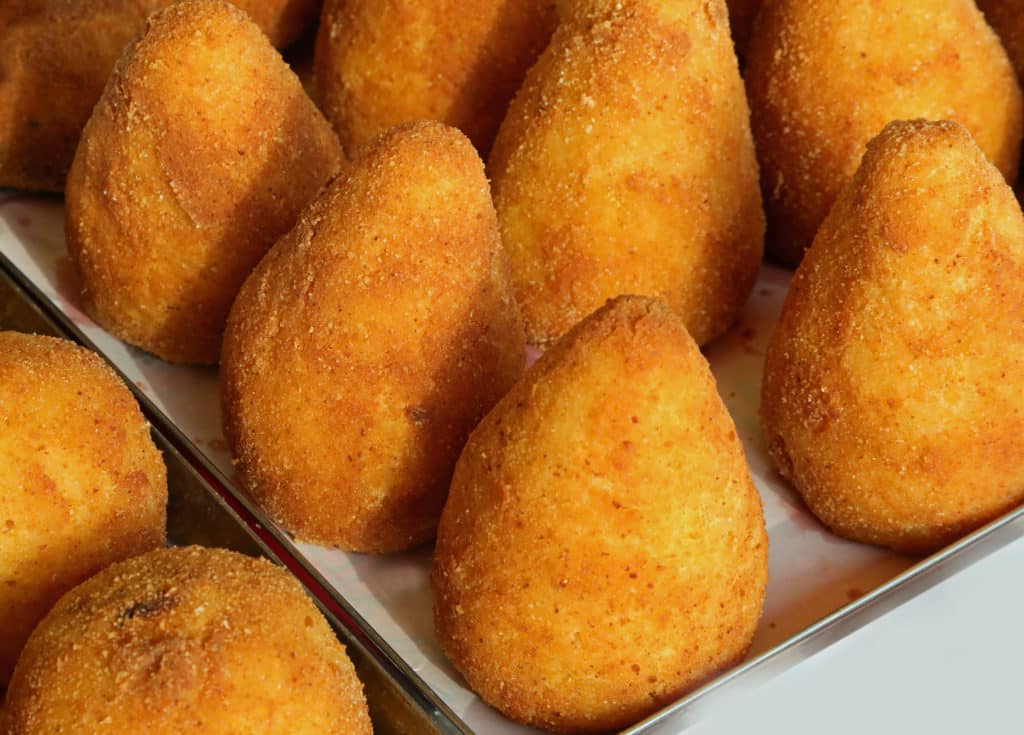
Arancini
In the 1600s, Sicily was experiencing a famine under Spanish rule. On December 13th, St. Lucia saved the island when a ship packed with wheat arrived at ports in Palermo and Siracusa.
Every year on December 13th, Sicilians abstain from eating bread or pasta for twenty-four hours, and one of the most commonly cooked specialties is the rice balls known as arancini (or arancine, depending on which side of the island you’re on). While this marks a special day where arancini always make it onto the menu, you’ll see them available year-round.
You’ll find arancini throughout Italy, but they originated in Sicily and are popular eats any day of the year. These little balls of rice are typically deep-fried and loaded with a meat sauce, ham, and some cheese.
Brioche con Gelato
Gelato for breakfast? Don’t mind if we do! Make like a Sicilian and eat brioche con gelato for breakfast. As it sounds, Italian gelato is sandwiched into a toasted, buttery, fluffy bun. The brioche soaks up the gelato as it melts, and you can eat this just like you would a sandwich or use the small gelato spoon from the gelateria to scoop it.
Sicilians also love a brioche con granita. An iced treat made of simple sugar, water, and flavorings, a granita has a smooth yet slightly icy texture. In Messina, a Sicilian destination well-known for its coffee granita — a perfect pairing with a toasty bun to start the day.
Cannoli
Not everyone agrees on the origins of cannolis. Some believe concubines invented them in Caltanissetta, while others claim they were first made for Carnival in cities like Palermo and Messina. Others still claim that the sweet treat originated from the island’s Muslim rule.
But everyone can agree that this fried pastry dough—filled with a lightly sweet, creamy ricotta filling—is one of Sicily’s most-loved street foods. For maximum cannoli freshness, find a place that fills the pastry tube on the spot.
Caponata
The Sicilian stew, caponata, might remind you of French ratatouille or Spanish pisto manchego with its combination of simmered vegetables. However, the sweet-sour notes make it a dish all its own, and it tastes delicious both on its own and when served alongside bread. Eggplant steals the show as the star ingredient, with various recipes calling for carrots, bell peppers, potatoes, or raisins. You’ll often find caponata served as a side dish or an appetizer.
Cartocciata
Resembling a small calzone, this specialty originates from Catania and the surrounding area of Mt. Etna. The dough has a little lard added to make it lighter and fluffier than your usual pizza dough. Fillings traditionally include some tomato sauce, cheese, ham, and olives, but you might also find them loaded with eggplant, spinach, sausage, salami, or even egg.
Crocchè
Another variety of Sicilian street food is the potato croquette, the crocchè, or crocchè di patate. They include mashed potato, egg, cheese, and herbs, all coated in breadcrumbs. As with a few other street food delicacies, crocchè are fried to crispy perfection.
Frittola or Frittula
Waste not, want not. This dish takes the unused parts of a calf and turns them into a street food dish that Sicilians adore. These leftover parts get boiled and then—you guessed it—deep-fried to a crisp. A dash of pepper, a healthy squeeze of fresh lemon, and it all gets wrapped up in a paper cone for consumption while wandering Sicilian streets.
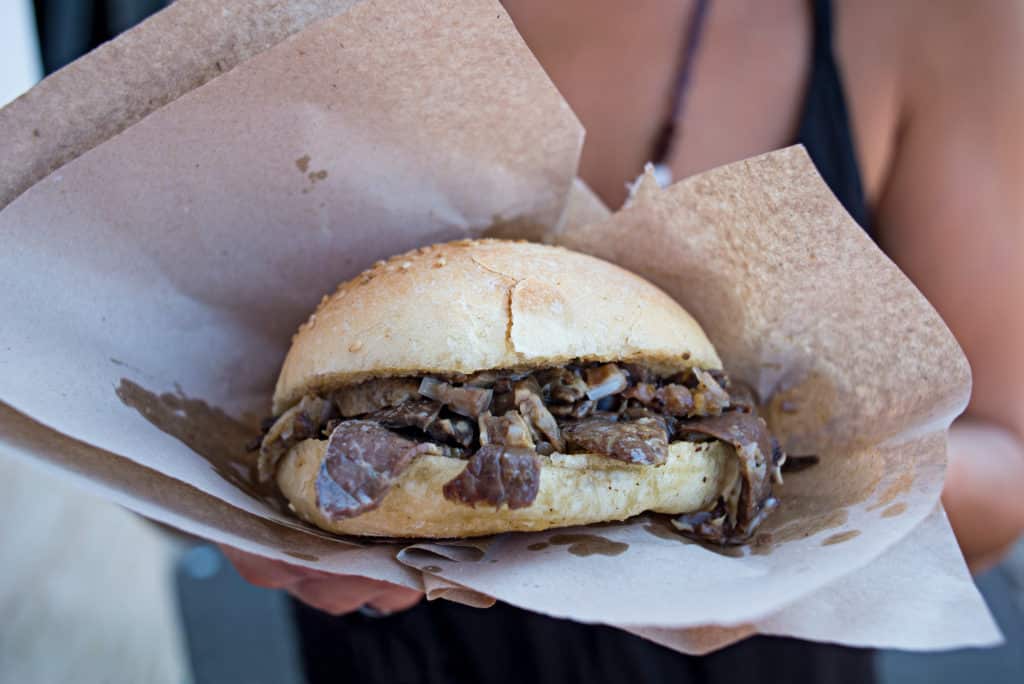
Pane con la Milza (or Pani câ Meusa)
When exploring the bustling markets of Palermo (like Ballarò, Capo, and Vucciria), grab one of these sandwiches that date back to the Middle Ages. At that time, Jews who worked as butchers would take home the leftovers of animals as payment. They would boil and fry the meat and stick it in a sandwich.
Pane con la milza translates literally to bread with spleen, and two versions exist. Ordering it schettu, meaning single, includes just the meat on bread, or maritatu, which translates to married and means the sandwich includes shredded caciocavallo cheese.
Panelle
It’s believed that the Arab rule between the 9th and 11th centuries sparked the start of the panella, a Sicilian food that’s essentially chickpea fritters or fritters. They have since become a street food staple, and these crispy, warm fritters are irresistible.
They taste incredible with a squeeze of fresh lemon over them and occasionally come with ricotta cheese on top. You can find Panino con le panelle, commonly as street food in Palermo, Sicily—fritters sandwiched between two fresh pieces of bread.
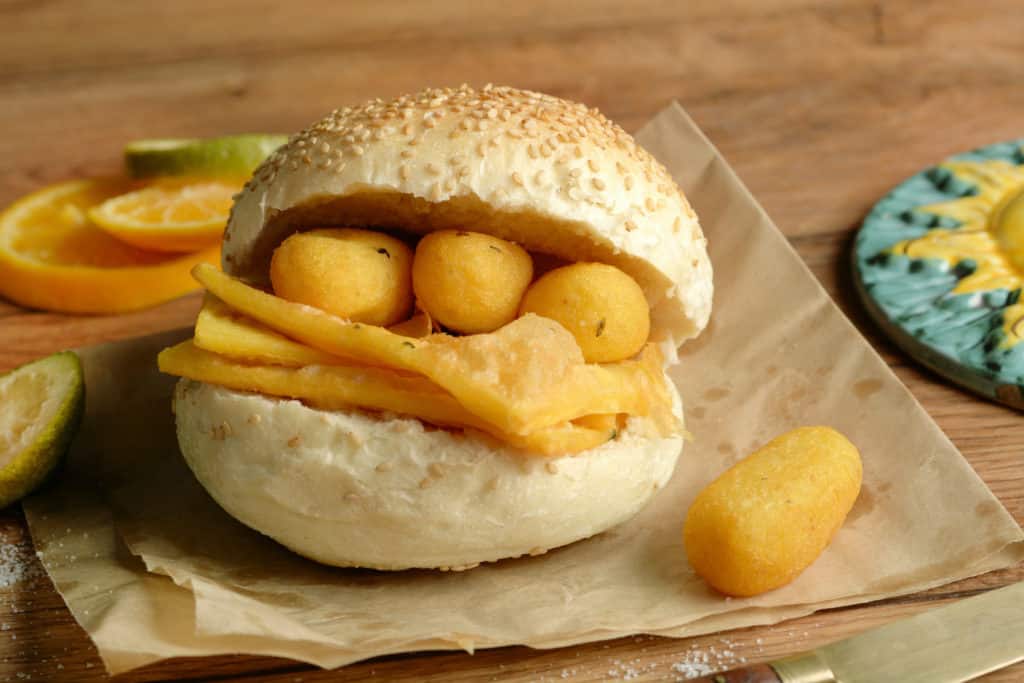
Pezzo di Rosticceria
The concept is simple yet oh-so irresistible. Pack a simple dough to the brim with various fillings, and you’ve got a mouthwatering pezzo di rosticceria.
The brioche dough typically consists of flour, sugar, salt, lard, and yeast, but fillings vary widely. You may find many pezzi di rosticceria containing ham and mozzarella, others with Vienna sausages, and more with minced meat and vegetables. You’ll see residents enjoying these bites at any time of day, morning, noon, or night. They’re also a popular choice for the club-going crowd as a late-night snack.
Polpette di Cavallo
Due to its lean nature and high iron content, carne di cavallo—or horse meat—has been eaten for centuries throughout Europe. Today, it’s far less common, but the tradition remains in certain areas, like Sicily.
Polpette di Cavallo are meatballs made with horse meat, either served alone with some sauces or on a sandwich. Horse lovers may find this dish a little hard to stomach, but this popular item has a tender, juicy texture that more adventurous foodies will want to try.
Scaccia
Also known as scacciata or sciacciata, this hybrid between a sandwich and lasagna boasts considerable versatility. You’ll see these stuffed with ricotta and onion, tomato and eggplant, or other fillings, and you can enjoy them hot or cold.
The word schiacciata means “crushed” or “squashed,” which speaks to how these treats are made. A thin layer of dough and the fillings get folded over onto themselves multiple times, and you’ll see the layers when you bite into it.
Sfincione
This Sicilian pizza originated in Bagheria, a top culinary destination in Italy, but today, you can find it all over Italy. Sfincione (pronounced “sfeen-cho-nay”) has a focaccia-like crust, and you’ll find street vendors selling them in cut rectangles. Most traditionally, the slices will be topped with olive oil, anchovies, cheese, breadcrumbs, and herbs and vegetables.
Stigghiola
On the streets of Palermo, vendors known as stiggiholaros will have these skewered specialties atop their grills, sizzling away. Savory and smoky, a stigghiola (also called a stigghiuola) are lamb or veal intestines seasoned with onions and parsley, sometimes wrapped around a leek and then served with a splash of fresh lemon.
Sicilians love their stigghiole so much it’s even a certified Prodotto agroalimentare tradizionale, or a traditional Italian food product as labeled by the Ministry of Agricultural, Food and Forestry Policies in Italy.
Get A Personalized Travel Itinerary
More Sicily Travel Tips
Hungry yet? We’d love to know which street foods have just shot to the top of your foodie bucket list for Sicily. Or, if you’re heading to Sicily soon, head here for information about Sicily:

Sicily Travel Guide
Are you considering traveling to Palermo, Noto, and the Sicily region in real life? Check out our free Sicily Travel Guide for our best travel tips, recipes, and articles on Italy.
Have Us Plan Your Sicily Trip
Our travel planning services help you achieve the ideal vacation. After discussing your preferences during a short consultation, we’ll plan your perfect itinerary. Whether you’re looking for custom travel planning or a small group trip, the Salt & Wind team is here to help.
Photo Credit: Cannoli by vincenzo scarantino; Arancini by ChiccoDodiFC; Pani ca’ meusa Alvaro German Vilela; Panelle by al1962
